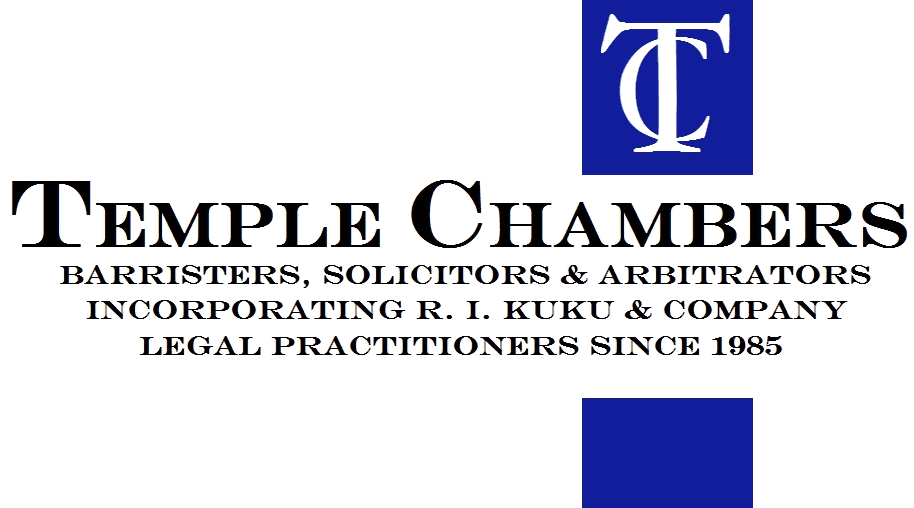- Obekpa House, 15 Mahatma Ghandi Street, Asokoro, Abuja
- (+234) 805 895 1790

- Home
- Our Firm
- Practice Area
- Advocacy
- Communications
- Corporate Law
- Government Relations & Regulatory Compliance
- Intellectual & Industrial Property
- lnsurance Law
- International Business Transactions (Joint Ventures & Mergers)
- International Correspondent Relationships
- Labour Law
- Litigation & Arbitration
- Oil & Gas Law
- Real Estate & Commercial Property
- Taxation
- Articles
- About Us
- Contact Us
International Business Transactions (Joint Ventures & Mergers)
Temple Chambers (Barristers & Solicitors)
International business transactions encompass a broad range of legal and regulatory considerations, especially when dealing with joint ventures and mergers. These transactions involve complex negotiations and intricate legal frameworks, requiring expertise in international law, corporate law, tax law, and regulatory compliance. This detailed explanation aims to provide an overview of the legal aspects of joint ventures and mergers within the context of international business transactions, highlighting key considerations, challenges, and real-world examples.
Joint Ventures
A joint venture (JV) is a business arrangement where two or more parties agree to pool their resources for a specific project or business activity. Each party maintains its distinct identity while sharing profits, losses, and control. Joint ventures are commonly used to enter new markets, combine expertise, or share risks in large-scale projects.
Legal Structure
Joint ventures can be structured in various forms, including contractual JVs, where parties enter into a contractual agreement without forming a new legal entity, and equity JVs, where a new entity is created and each party holds equity in the new entity. The choice of structure depends on the objectives of the parties, tax considerations, and regulatory requirements.
Key Considerations
Legal professionals must address several key considerations when structuring a joint venture. Governance and control are crucial in determining how decisions will be made and who will have control over the JV. This involves drafting detailed governance agreements outlining the roles and responsibilities of each party. For example, in the JV between Starbucks and Tata Global Beverages in India, the governance structure was clearly defined to balance control and decision-making between the partners.
Protecting and managing intellectual property (IP) is critical in joint ventures. Parties must agree on the use, ownership, and protection of IP assets contributed to or developed by the JV. The JV between Ford and Google for developing autonomous vehicle technology involved detailed agreements on IP rights and technology sharing.
Defining exit strategies and conditions under which parties can terminate the JV is essential. This includes buyout provisions, dispute resolution mechanisms, and procedures for asset distribution. The dissolution of the JV between Daimler and BYD for electric vehicles included a well-defined exit strategy, allowing for an orderly separation.
Compliance with local and international regulations is paramount. Legal professionals must navigate foreign investment laws, antitrust regulations, and industry-specific regulations. For instance, the JV between Alibaba and SoftBank in Japan required careful compliance with Japanese foreign investment laws and e-commerce regulations.
Mergers
A merger involves the combination of two or more companies into a single entity, often to achieve synergies, expand market reach, or enhance competitive advantage. Mergers can take various forms, including horizontal mergers (between competitors), vertical mergers (between suppliers and customers), and conglomerate mergers (between unrelated businesses).
Legal Structure
Mergers can be structured as statutory mergers, where one company absorbs another, or as consolidations, where a new entity is formed. The choice of structure depends on factors such as tax implications, regulatory approval processes, and the strategic goals of the merging companies.
Key Considerations
Legal professionals must address several critical considerations when facilitating a merger. Conducting thorough due diligence is crucial to identify potential risks and liabilities. This involves reviewing financial records, contracts, legal compliance, and intellectual property assets. The merger between Disney and 21st Century Fox involved extensive due diligence to assess the value and risks associated with Fox’s media assets.
Securing regulatory approval from relevant authorities is essential. This includes antitrust reviews to ensure the merger does not create monopolistic market conditions. The merger between Bayer and Monsanto required approval from multiple regulatory bodies, including the European Commission and the U.S. Department of Justice, to address antitrust concerns.
Determining the valuation of the companies involved and securing financing for the merger are critical steps. Legal professionals work with financial advisors to ensure fair valuation and arrange financing, whether through cash, stock, or a combination. The merger between Amazon and Whole Foods involved a detailed valuation process and financing through a mix of cash and stock transactions.
Developing a comprehensive integration plan is vital to ensure a smooth transition. This includes aligning corporate cultures, integrating IT systems, and retaining key employees. The merger between Exxon and Mobil required meticulous integration planning to merge their operations and workforce effectively.
Mergers involving companies from different countries present additional challenges, such as navigating diverse legal systems, tax implications, and cultural differences. The merger between Glencore and Xstrata, two mining companies from Switzerland and the UK respectively, required careful consideration of cross-border legal and tax issues.
Challenges and Trends
Cultural Integration
One of the primary challenges in international joint ventures and mergers is cultural integration. Differences in corporate cultures, management styles, and communication practices can create friction. Legal professionals often work with HR and organizational consultants to facilitate cultural alignment and ensure a harmonious working relationship.
Technological Advancements
The rapid pace of technological advancements also impacts international business transactions. Companies must consider the implications of emerging technologies, such as artificial intelligence and blockchain, on their operations and legal agreements. Legal professionals need to stay abreast of technological trends to advise clients effectively.
Environmental, Social, and Governance (ESG) Factors
ESG considerations are becoming increasingly important in international business transactions. Companies are expected to adhere to higher standards of environmental stewardship, social responsibility, and corporate governance. Legal professionals must ensure that joint ventures and mergers align with ESG principles to meet stakeholder expectations and regulatory requirements.
Useful Links
Get In Touch
Don’t hesitate with your future!
Give Us A Call Today!
© Copyright 2024 - Temple Chambers (Barristers & Solicitors) - All Rights Reserved.

